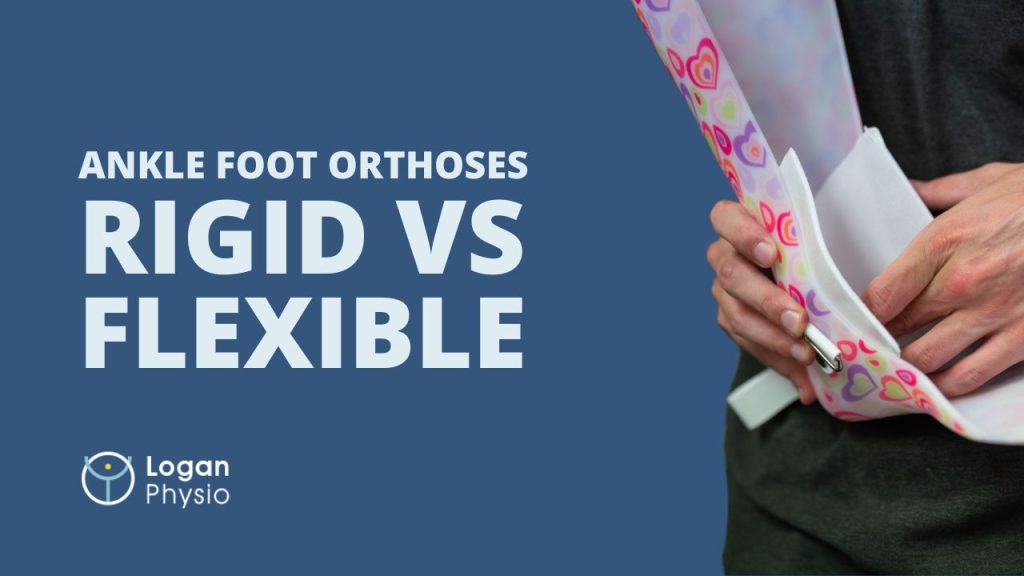Ankle-Foot Orthoses (AFOs) play a crucial role in supporting individuals with impaired ankle dorsiflexion, especially those living with neurological conditions like multiple sclerosis (MS). These devices help manage foot drop – a condition where lifting the front part of the foot is difficult, leading to tripping or inefficient walking patterns.
When it comes to choosing the right orthosis, there’s often a comparison made between rigid (thermoplastic) AFOs and more flexible options like the Dictus band. Each has unique characteristics that impact gait, balance, and overall mobility. This article explores both types, key clinical research, and helps you understand which may be the better choice depending on individual needs.
What Are Ankle-Foot Orthoses?
Ankle-foot orthoses are external devices designed to control foot and ankle movement, typically used to:
- Prevent foot drop during the swing phase of walking
- Improve gait efficiency
- Support balance and stability
- Minimise the risk of tripping or falling
AFOs are especially common in individuals with neuromuscular disorders, such as:
- Multiple sclerosis (MS)
- Stoke
- Cerebral palsy
- Peripheral nerve injuries
Rigid AFOs: Traditional Thermoplastic Design
Rigid AFOs, typically made from thermoplastic materials, are among the most commonly prescribed orthoses. These devices are shaped to fit the lower leg and foot and are designed to:
- Prevent plantarflexion (pointing the toes down)
- Maintain the foot in a neutral position during walking
- Provide structural support during standing and ambulation
Pros of Rigid AFOs
- Effectively prevent foot drop
- Offer strong support and stability for weak muscles
- Useful in cases where severe muscle weakness or spasticity is present
Cons of Rigid AFOs
Despite their benefits, rigid AFOs may come with functional limitations:
- Impeded active plantarflexion: This restricts the ankle’s natural “push-off” needed during walking, which can reduce walking speed and energy efficiency.
- Reduced propulsive force: During terminal stance (the last phase of gait), reduced plantarflexion limits the ability to propel the body forward.
- Altered ground reaction forces: Rigid AFOs can increase vertical impact during walking, potentially decreasing balance.
- Limited adaptability: They may not respond well to changing terrain or dynamic movements.
These limitations can be especially significant for people with MS who retain some active ankle movement and could benefit from a more dynamic support.

Flexible AFOs: The Dictus Band Approach
A Dictus band represents a flexible orthotic alternative. It is a dynamic device made with elastic materials, designed to assist dorsiflexion (lifting the foot upwards) without blocking plantarflexion.
How Does the Dictus Band Work?
The device typically consists of:
- An elastic rubber band connected from the ankle or leg brace to the shoe
- A gentle upward pull to assist foot lift during the swing phase
- Room for active plantarflexion during stance and push-off
Key Benefits
- Preserves natural ankle motion, particularly plantarflexion required for propulsion
- Encourages faster walking speeds and more energy-efficient gait
- May improve dynamic balance by allowing better foot-ground contact during movement
- Lightweight and less bulky compared to traditional rigid AFOs

What Does the Research Say?
Study Spotlight: Parian et al. (2021)
A notable study titled “The Comparison of the Effects of Flexible vs Rigid Ankle-foot Orthoses on Balance and Walking Performance in Individuals With Multiple Sclerosis: A Crossover Study” provides valuable insight.
Study Overview:
- Participants: Individuals diagnosed with multiple sclerosis (PwMS)
- Devices Compared: Rigid thermoplastic AFO vs Dictus band (flexible AFO)
- Key Metrics: Balance, walking speed, gait performance, and mobility safety.
Main Findings:
- Dictus band improves walking performance
- The flexible orthosis allowed better dynamic movement and resulted in superior walking performance compared to the rigid AFO.
- No compromise in balance
- Despite concerns that a flexible AFO might reduce stability, the study found no negative effect on balance. In fact, the Dictus band facilitated better foot-ground interaction, aiding proprioception and stability.
- Safer and more natural walking
- Participants using the Dictus band showed comparable outcomes to barefoot walking, without the added risk of foot drop.
- Feasibility and comfort
- The study concluded that the Dictus band is a feasible, safe, and potentially effective intervention for managing foot drop in people with MS.
Citation
Parian SS, Fereshtenjad N, Hillier S, Sadeghi-Demneh E. The Comparison of the Effects of Flexible vs Rigid Ankle-foot orthoses on Balance and Walking Performance in Individuals With Multiple Sclerosis: A Crossover Study. Iranian Rehabilitation Journal. 2021; 19(2):199-206. http://dx.doi.org/10.32598/irj.19.2.1421.2
Choosing the Right AFO: Rigid vs Flexible
When Rigid AFOs May Be Appropriate:
- Severe foot drop with no active plantarflexion
- High levels of spasticity or joint instability
- Need for maximum structural support
When Flexible AFOs (Dictus Band) May Be Better:
- Mild to moderate foot drop
- Presence of some active ankle movement
- Desire for more dynamic and natural gait
- Concerns about comfort, speed, and mobility confidence
Final Thoughts: Empowering Mobility with the Right Orthosis
Ankle-foot orthoses remain an essential tool in managing conditions like multiple sclerosis, particularly for those experiencing foot drop. However, the design and flexibility of the device matter greatly.
While rigid thermoplastic AFOs offer stability and support, they may inadvertently limit natural ankle movements and reduce mobility potential. On the other hand, flexible options like the Dictus band provide dynamic assistance without compromising propulsion, balance, or walking speed.
As highlighted in the 2021 crossover study, flexible AFOs can safely improve balance and gait in PwMS, making them a valuable, patient-centred alternative.
If you’re exploring orthotic options for foot drop – whether due to MC or another neurological condition – it’s worth discussing both rigid and flexible AFOs with a physiotherapist or orthotist. The best choice is the one that fits your functional goals, level of impairment, and daily lifestyle needs.
Looking for more guidance on managing foot drop or mobility in neurological conditions?
Book an appointment with the team at Logan Physio to explore personalised orthotic solutions, mobility training, and ongoing rehabilitation support.


